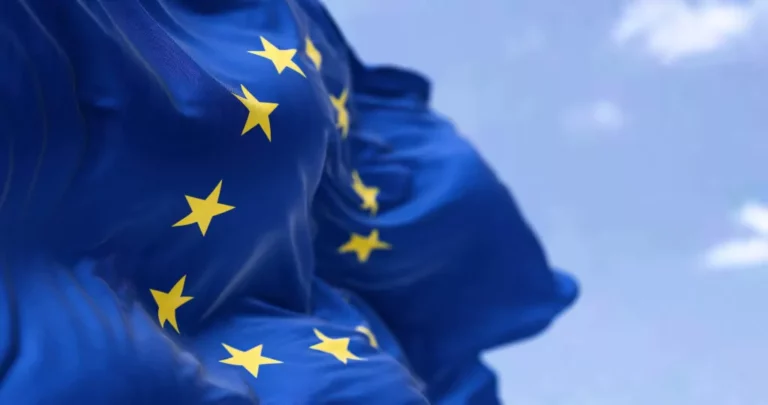Add to favorites:
Share:
Projects’ results are expected to contribute to some or all of the following outcomes:
- Contributing to development of fully automated customs control checkpoints;
- Enhancing detection capabilities for customs security, while facilitating trade.
Scope:
European customs need improved capabilities that allow bettering and automatically detecting from traces; interpreting images from scanned cargo; interpreting data; tracking goods; and/or identifying anomalies that support the detection of threats, smuggling or illicit trade eliminating or minimizing disruption to the trade flow. The proposed system should hence advance and/or combine as much as possible the components of detection, tracking and risk-based anticipation.
On detection, the proposed solution(s) could include trustworthy algorithms for recognition that minimise false positives and biases. Proposed research could include, for example, image (shape) recognition and interpretation, and/or a trace detection approach
On tracking, the research can propose and explore, for example, technologies for improved traceability of goods and items that could be illicitly trafficked using non-invasive markings.
On risk-based anticipation, the proposed solution(s) can leverage automated image recognition and interpretation capability coupled with data analytics, such as using advance cargo information in order to anticipate and detect security risks prior to goods’ arrival at the EU external borders.
The research project can test one or more specific use cases, such as (non-exhaustive examples): art; cultural goods; waste and other environmentally risky material, including radioactive ones; valuables; and/or dangerous items either assembled or disassembled.
Improving energy efficiency and environmental impact aspects of new security technologies for this capability (e.g. low environmental footprint, low emissions, circular economy aspects and/or self-sustained equipment) would be desirable.
Examples of technologies and approaches that can be explored by the research projects include (non-prescriptive and non-exhaustive): scanning (vision), detectors/”sniffers” (traces), nanotechnology, blockchain/DLT, artificial intelligence.
Research projects should consider, build on (if appropriate) and not duplicate previous research, including but not limited to research by other recent EU Framework Programmes projects on security research.
Proposals should delineate the plans for further development to subsequent TRLs as well as uptake (industrialisation, commercialisation, acquisition and/or deployment) at national and EU level, should the research deliver on its goals. The results of the research should be taken up by EU customs authorities in the framework of the Customs Union “acting as one”, with the support of the Customs Control Equipment Instrument (CCEI).
The involvement of Police Authorities[1] is encouraged, as well as synergies with relevant topics of the Fighting against Crime and Terrorism Destination.
[1]In the context of this Destination, ‘Police Authorities’ means public authorities explicitly designated by national law, or other entities legally mandated by the competent national authority, for the prevention, detection and/or investigation of terrorist offences or other criminal offences, specifically excluding police academies, forensic institutes, training facilities as well as border and customs authorities.
Expected Outcome
Projects’ results are expected to contribute to some or all of the following outcomes:
- Contributing to development of fully automated customs control checkpoints;
- Enhancing detection capabilities for customs security, while facilitating trade.
Scope
European customs need improved capabilities that allow bettering and automatically detecting from traces; interpreting images from scanned cargo; interpreting data; tracking goods; and/or identifying anomalies that support the detection of threats, smuggling or illicit trade eliminating or minimizing disruption to the trade flow. The proposed system should hence advance and/or combine as much as possible the components of detection, tracking and risk-based anticipation.
On detection, the proposed solution(s) could include trustworthy algorithms for recognition that minimise false positives and biases. Proposed research could include, for example, image (shape) recognition and interpretation, and/or a trace detection approach
On tracking, the research can propose and explore, for example, technologies for improved traceability of goods and items that could be illicitly trafficked using non-invasive markings.
On risk-based anticipation, the proposed solution(s) can leverage automated image recognition and interpretation capability coupled with data analytics, such as using advance cargo information in order to anticipate and detect security risks prior to goods’ arrival at the EU external borders.
The research project can test one or more specific use cases, such as (non-exhaustive examples): art; cultural goods; waste and other environmentally risky material, including radioactive ones; valuables; and/or dangerous items either assembled or disassembled.
Improving energy efficiency and environmental impact aspects of new security technologies for this capability (e.g. low environmental footprint, low emissions, circular economy aspects and/or self-sustained equipment) would be desirable.
Examples of technologies and approaches that can be explored by the research projects include (non-prescriptive and non-exhaustive): scanning (vision), detectors/”sniffers” (traces), nanotechnology, blockchain/DLT, artificial intelligence.
Research projects should consider, build on (if appropriate) and not duplicate previous research, including but not limited to research by other recent EU Framework Programmes projects on security research.
Proposals should delineate the plans for further development to subsequent TRLs as well as uptake (industrialisation, commercialisation, acquisition and/or deployment) at national and EU level, should the research deliver on its goals. The results of the research should be taken up by EU customs authorities in the framework of the Customs Union “acting as one”, with the support of the Customs Control Equipment Instrument (CCEI).
The involvement of Police Authorities[1] is encouraged, as well as synergies with relevant topics of the Fighting against Crime and Terrorism Destination.
[1]In the context of this Destination, ‘Police Authorities’ means public authorities explicitly designated by national law, or other entities legally mandated by the competent national authority, for the prevention, detection and/or investigation of terrorist offences or other criminal offences, specifically excluding police academies, forensic institutes, training facilities as well as border and customs authorities.

